I've been experimenting with adversarial images and I read up on the fast gradient sign method from the following link https://arxiv.org/pdf/1412.6572.pdf...
The instructions explain that the necessary gradient can be calculated using backpropagation...

I've been successful at generating adversarial images but I have failed at attempting to extract the gradient necessary to create an adversarial image. I will demonstrate what I mean.
Let us assume that I have already trained my algorithm using logistic regression. I restore the model and I extract the number I wish to change into a adversarial image. In this case it is the number 2...
# construct model
logits = tf.matmul(x, W) + b
pred = tf.nn.softmax(logits)
...
...
# assign the images of number 2 to the variable
sess.run(tf.assign(x, labels_of_2))
# setup softmax
sess.run(pred)
# placeholder for target label
fake_label = tf.placeholder(tf.int32, shape=[1])
# setup the fake loss
fake_loss = tf.nn.sparse_softmax_cross_entropy_with_logits(logits=logits,labels=fake_label)
# minimize fake loss using gradient descent,
# calculating the derivatives of the weight of the fake image will give the direction of weights necessary to change the prediction
adversarial_step = tf.train.GradientDescentOptimizer(learning_rate=FLAGS.learning_rate).minimize(fake_loss, var_list=[x])
# continue calculating the derivative until the prediction changes for all 10 images
for i in range(FLAGS.training_epochs):
# fake label tells the training algorithm to use the weights calculated for number 6
sess.run(adversarial_step, feed_dict={fake_label:np.array([6])})
sess.run(pred)
This is my approach, and it works perfectly. It takes my image of number 2 and changes it only slightly so that when I run the following...
x_in = np.expand_dims(x[0], axis=0)
classification = sess.run(tf.argmax(pred, 1))
print(classification)
it will predict the number 2 as a number 6.
The issue is, I need to extract the gradient necessary to trick the neural network into thinking number 2 is 6. I need to use this gradient to create the nematode mentioned above.
I am not sure how can I extract the gradient value. I tried looking at tf.gradients but I was unable to figure out how to produce an adversarial image using this function. I implemented the following after the fake_loss variable above...
tf.gradients(fake_loss, x)
for i in range(FLAGS.training_epochs):
# calculate gradient with weight of number 6
gradient_value = sess.run(gradients, feed_dict={fake_label:np.array([6])})
# update the image of number 2
gradient_update = x+0.007*gradient_value[0]
sess.run(tf.assign(x, gradient_update))
sess.run(pred)
Unfortunately the prediction did not change in the way I wanted, and moreover this logic resulted in a rather blurry image.
I would appreciate an explanation as to what I need to do in order calculate and extract the gradient that will trick the neural network, so that if I were to take this gradient and apply it to my image as a nematode, it will result in a different prediction.

